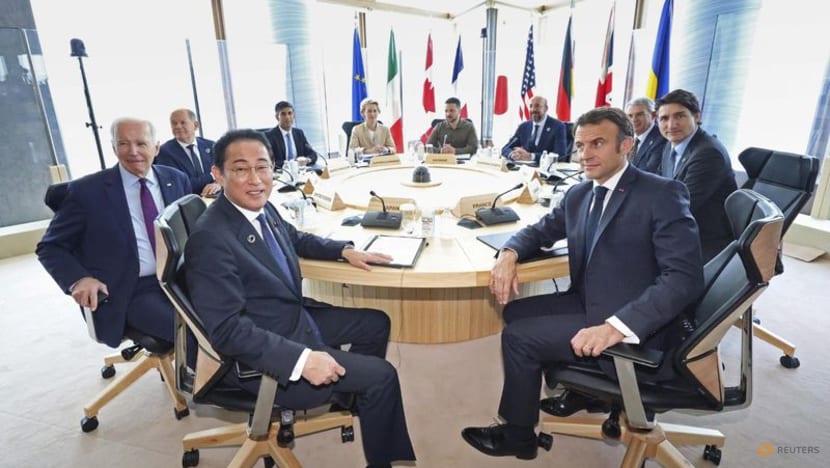Commentary: A year after Abe’s death, Japan is more geopolitically relevant than ever
On the anniversary of the former prime minister’s assassination, Japan is closer to Shinzo Abe’s vision for the country, says Bloomberg Opinion’s Gearoid Reidy.

TOKYO: It would be easy to assume that not much has changed since Shinzo Abe, Japan’s longest-serving prime minister and de facto senior statesman, was assassinated in broad daylight one year ago.
But there’s an evolution underway, and Japan is moving closer to the nation Abe aspired to when he was gunned down on the campaign trail for upper house elections on Jul 8, 2022. The language of decline, of a country whose time has passed, is gone: From think tanks to hedge funds, Japan is on everyone’s lips. Tokyo is at the heart of Washington’s strategy to “de-risk” from China.
Money is flowing into the markets, led by Warren Buffett. And tourists are flocking back, with more Americans coming now than before the pandemic.
Abe aimed to build a Japan that could cast off the shackles of its wartime guilt and assume a position on the geopolitical stage befitting its economic might.
The former prime minister laid out not just how his nation should position itself against China, but created the model that now dominates Western thinking toward Beijing. He spearheaded the concept of the “free and open Indo-Pacific,” later adopted by the United States, outlining this coalition of like-minded nations as far back as 2007.
The current prime minister, Fumio Kishida, has taken that ball and is running with it, with his plan to radically overhaul Japan’s military spending, a move that has vociferous US support. The country is taking steps to shore up its weakened defense industry and is looking to relax a long-standing ban on the export of weapons in a bid to add additional support for Ukraine.
NO TALK OF CONCERNS OVER REMILITARISATION
The Quad, a group that Abe championed, has become central to US strategy in Asia (the other cornerstones are India and Australia.) No one talks anymore of concerns over revisionist politicians or Japanese remilitarisation.
It’s easy to forget that Japan could have taken a very different path. The remarks by China’s top diplomat this week that Japanese and South Koreans can “never become Western” serve a reminder that Beijing still seeks to unite minds in Asia against the US.
It may be of little use, with ties between Seoul and Tokyo at last on an upswing. After a quick pair of visits to their respective capitals, Kishida and South Korean President Yoon Suk-yeol are reportedly set to meet on the sidelines of next week’s North Atlantic Treaty Organization (NATO) meeting in Lithuania.
Even the ruling Liberal Democratic Party has its powerful China doves. It has not been 15 years since former Japan leader Yukio Hatoyama sought to shift the country away from the US and closer to Beijing.
GROWING ECONOMY, RETURN OF FOREIGN INVESTMENTS
Domestically, revitalising Japan’s economy was key to Abe’s goals.
There’s good news on this front: The country is expected to have gross domestic product growth of 1.2 per cent this year, among the highest of major developed economies. Deflation is a memory. Companies are passing on input costs and expressing willingness to pay workers more, even if real pay is still declining.
Most notable has been the recent resurgence in interest from investors, a boom on a level not seen since Abe himself came back into power in late 2012.
The return of foreign money has less to do with anything Kishida created, and more with three pillars that Abe himself put in place: Japan’s emergence as an alternative to China, a gateway to Asia where the rule of law is respected; the expansive monetary policy of the Bank of Japan, which has continued into Kazuo Ueda’s term; and a sudden awareness of corporate governance reforms enacted nearly a decade ago.
In shifting management’s attitudes toward shareholders, Abe scored a bigger victory than anyone immediately realised. While it has taken time for those changes to bear fruit, they’re slowly pushing boards to improve returns and valuations.
All of this has helped lift Japanese stocks higher than at any time during Abe’s time in power; some expect the Nikkei 225 may finally surpass its bubble-era high this year.
FUMIO KISHIDA REMAINS POLITICALLY VULNERABLE
That might prove to be yet another false “Japan is back” moment. Risks abound, particularly in political terms.
Would a second Trump administration place such importance on international cooperation in Asia? Can Kishida, whose own economic plans have largely fallen flat, advance the reforms Abe began?
The incumbent’s position remains far from secure. By all accounts, Kishida was last month close to pulling the trigger on a snap election that might have secured his term for years.
That was before scandals involving his son (employed as his secretary), along with glitches in a national identification scheme got in the way. These events would in most other countries barely make the headlines, but show how vulnerable Kishida remains.
Much of what Abe sought to do still feels distant. The conversation on constitutional reform rolls on without action. Growth remains concentrated in a small number of cities, notably Tokyo, despite promises of regional revitalisation. Movement has been slow on his goal to boost women’s participation in society.
But Abe was so successful precisely because of his failure. His humiliating resignation during his first stint in power in 2007 inspired him to go back to square one, rebuilding himself as a force to not only equal his past achievements, but surpass them.
It’s a fitting example, perhaps, for the country as a whole.
















